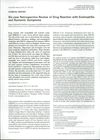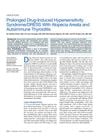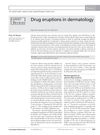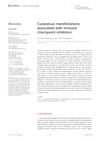HHV-6A and HHV-6B in Drug-Induced Hypersensitivity Syndrome/Drug Reaction with Eosinophilia and Systemic Symptoms
January 2014
in “
Elsevier eBooks
”
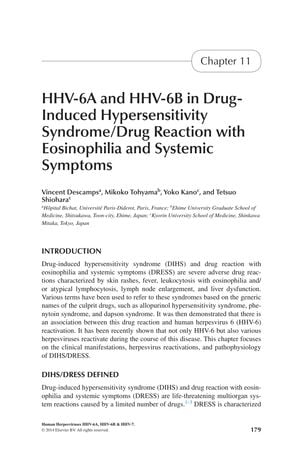
TLDR The document concludes that reactivation of herpesviruses, especially HHV-6, is linked to severe symptoms and complications in drug-induced hypersensitivity syndrome.
The document from 2014 examines Drug-Induced Hypersensitivity Syndrome/Drug Reaction with Eosinophilia and Systemic Symptoms (DIHS/DRESS), a severe drug reaction with a mortality rate of 10 to 20% and an incidence of one case per 1,000 to 10,000 drug exposures. It is characterized by symptoms such as skin rashes, fever, and liver dysfunction, and is associated with reactivation of human herpesvirus 6 (HHV-6) and other herpesviruses. Eosinophilia is present in 50 to 70% of patients, and symptoms can vary based on the drug involved, with hepatitis being common. The syndrome can lead to flare-ups and new symptoms like central nervous system disorders and type 1 diabetes after initial improvement. Reactivation of HHV-6 is common 2 to 3 weeks after onset and is linked to symptom flaring, while cytomegalovirus (CMV) and Epstein-Barr virus (EBV) may also reactivate. The document also connects DIHS/DRESS with the development of fulminant type 1 diabetes mellitus (FT1DM) and other autoimmune diseases, highlighting the importance of recognizing the wide range of clinical manifestations and the role of herpesvirus reactivation in severe cases. Corticosteroids are the main treatment, with the suggestion of combining antiviral treatment for long-term disease control. The research was supported by the Research Project on Measures for Intractable Diseases and the Ministry of Health, Labour and Welfare.
